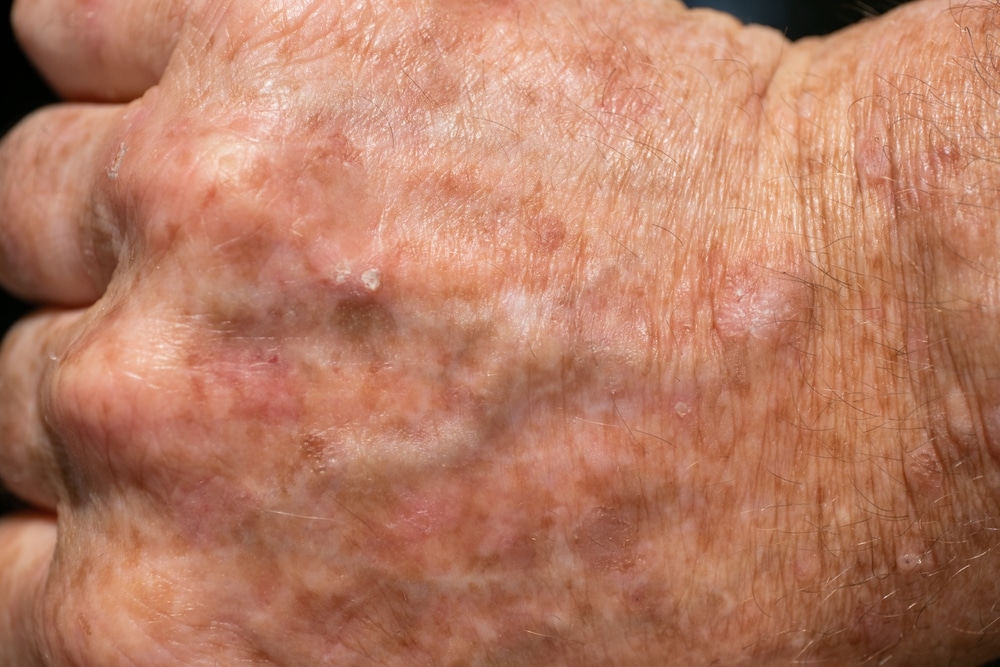Too Much of a Good Thing
While laying out in the sun during the summer months may feel good, too much sun exposure damages the skin. The outer layer of your skin, called the epidermis, protects you with layers of specialized cells that keep out unwanted invaders. Known as keratinocytes, these cells also repair skin damage and work as part of the immune system. Ultraviolet (UV) light from the sun can change the DNA inside the cells, whether from years outside or from indoor tanning equipment.
Some people may begin to experience dry patches, red scaly spots, sensitive patches, or crusty bumps. This skin condition is called actinic keratosis (AK) or solar keratosis and it can develop into a skin cancer called squamous cell carcinoma.
How You Can Tell if You Have Actinic Keratosis
A dermatologist can tell if you have actinic keratosis (AK) with a high level of certainty. AK can resemble several other conditions including cancer, particularly squamous cell carcinoma, basal cell carcinoma, or sometimes even a wart or seborrheic dermatitis. The size of the lesions ranges from a millimeter to over an inch. They are typically scaly, but may feel crusty, raised, flat, or even horn-shaped. AKs usually appear red or pink, and even could present as tan, brown, gray, or silvery. They may or may not hurt, bleed, or itch. Lesions can come and go and usually appear on areas that are sun-exposed. Locations, where AKs are commonly found include the face, scalp, top of hands, lips, ears, forearms, chest, neck, and legs. Really any area that has long-term exposure to UV light is susceptible.
What Happens if Actinic Keratosis is Left Untreated?
If left untreated, actinic keratosis can enlarge, bleed, and ultimately transform into squamous cell carcinoma. The more AKs an individual has, the higher the risk they have to develop squamous cell carcinoma. If you don’t take preventive steps such as sun protection, actinic keratosis will likely return. If you’re fair-skinned, have a history of severe sunburns or chronic sun exposure, or suffer from an impaired immune system, you may have a higher risk of developing AKs. Patients taking certain medications (eg: azathioprine, hydrochlorothiazide, voriconazole, hydroxyurea) and those with genetic skin disorders that result in sun sensitivity are also at higher risk.
Treatment
HMGS Dermatology may choose to treat your AKs with a variety of modalities. Cryosurgery, Efudex (5-fluorouracil) cream, imiquimod cream, diclofenac gel, Klysiri (tirbanibulin) cream, curettage, chemical peels, and photodynamic therapy can all be used by your HMGS dermatologist.
Schedule Your Consultation
If you are concerned regarding any lesions on your body, be sure to seek out a dermatology consultation. If you have any questions, contact HMGS Dermatology online or give us a call today.
